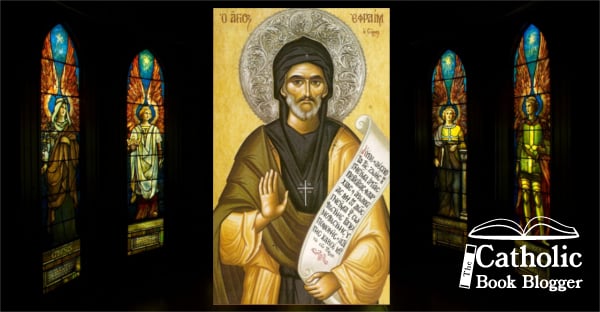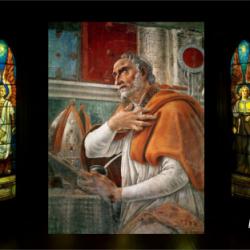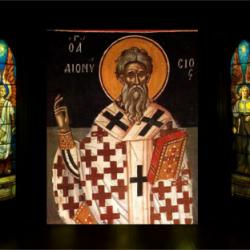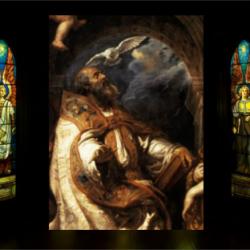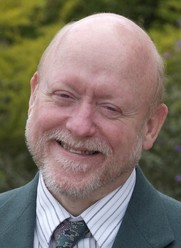 PETE: How difficult is it to compile 365 entries for a devotional book like A Year With the Saints? This would include the saints you chose and the topics for the meditations themselves.
PETE: How difficult is it to compile 365 entries for a devotional book like A Year With the Saints? This would include the saints you chose and the topics for the meditations themselves.
PAUL THIGPEN: My field of scholarship is historical theology, so nearly all the texts from which the readings were selected were in my private library. The great challenge, then, wasn’t how to find the sources; the great challenge was how to decide which sources couldn’t be included!
My final choice of the saints to be quoted reflect several criteria. First, I wanted a good mix of men and women, as well as a wide variety of saints in terms of vocation, historical period, geography, and culture. I also wanted to make sure I included not just many of the most popular saints, but also some little-known saints who have something important to say to us.
Second, my priority was to go deep rather than wide in content. So instead of trying to find a different saint for every day, I often selected multiple passages from one saint. That way, I could offer a rich array of readings from saints whose classic texts, I believe, merit special attention, such as St. Augustine and St. Frances de Sales.
As for the choice of topics: Following the format of the other titles in this series from Saint Benedict Press, even though the book offers a year’s worth of daily readings (365), the topics aren’t tied to the liturgical calendar. Instead, my organizing principle for the topics was to follow, in a rough sort of way, the order of topics in the Catechism of the Catholic Church. The subject matter begins with readings related to the profession of faith, then moves to the celebration of the Christian mystery, then to life in Christ, and finally to Christian prayer.
In addition, as a kind of introduction, the very first reading is an encouragement from St. Basil about the importance of learning from the saints. And as a final word, the last reading is an exhortation from St. Thérèse about striving to become a saint ourselves.
Perhaps the greatest challenge here was to find a good balance between doctrinal topics and practical matters. You’ll find here, for example, a reading about the mystery of God’s nature, but also a reading about people who chatter during Mass!
PETE: What was your goal in compiling this book, and what do you hope readers take away from it?
PAUL THIGPEN: The goal of the Christian life is to become a saint—to be perfected in holiness, to be conformed to Christ, so that we will one day see God face to face and be like Him. As several saints themselves have observed, one of the best ways to move toward this goal is to study the words and lives of the saints, who have already made this journey and want to help us along. So my goal for the book, and my hope for readers, is that they will find here a powerful resource for doing precisely that.
PETE: Why do you feel daily meditation is so important?
PAUL THIGPEN: The practice of daily meditation and prayer has always been recognized as an essential component of spiritual life in the Christian tradition, and in the Jewish tradition as well, from which it springs. The psalmist calls “blessed” the one who “meditates day and night” on God’s words (Ps 1:2). “Every day I call upon You, O Lord” (Ps 88:9). “Every day I will bless You” (Ps 145:2).
PETE: Are there any particular writings of the saints you would recommend for deeper study and reflection?
PAUL THIGPEN: There are so many riches here that I hardly know where to begin! For an honest and intimate spiritual autobiography, read St. Augustine’s incomparable Confessions, or The Story of a Soul by St. Thérèse of Lisieux. For a useful, practical guide to everyday Christian life, read St. Frances de Sales’ Introduction to the Devout Life. If you want to go deeper into mystical theology, read The Interior Castle of St. Teresa of Ávila. And for the serious student of theology, you must begin to make your way carefully through St. Thomas Aquinas’ Summa Theologica.
I should note that some of these titles, and many other writings of the saints, are available from TAN Books, where I have the great pleasure of serving as editor.
PETE: In the introduction of the book you state you converted to Catholicism 20 years ago. Could you share your conversion story with my readers?
PAUL THIGPEN: It’s a bit involved—for the full story, you can read “His Opened Arms Welcomed Me,” a chapter I wrote for the first volume of Surprised by Truth, edited by Patrick Madrid (Basilica, 1994). It’s available online as well in the EWTN archive and other websites.
To summarize: A number of factors converged to bring me, first, from atheism to the Christian faith; and then twenty years later, from life as an Evangelical Protestant pastor into the Catholic Church. But perhaps the most important factor in my second conversion was my study of Church history in a Ph.D. program. As Blessed John Henry Cardinal Newman once said, “To be deep in history is to cease to be Protestant.”
The historical record convinced me that the Catholic Church is the Church Jesus founded, and that the essential Catholic doctrines challenged by Protestants were actually believed and taught by the early Christians—even those who had received the Faith directly from the Apostles. Once I knew that, I also knew that I had to enter the Catholic Church myself.
PETE: Time for my signature ending question. This is a blog about books. What is currently on your bookshelf to read?
PAUL THIGPEN: I’m currently reading the marvelous work of Fr. Vincent McNabb, O.P., an Irish Dominican of the early 20th century who ministered in England. Fr. McNabb was a friend of G. K. Chesterton, Hilaire Belloc, and Monsignor Ronald Knox, all of whom praised him highly. Chesterton once said of him: “He is one of the few great men I have met in my life. … Nobody who ever met or saw or heard Father McNabb has ever forgotten him.”
So far, I’ve read Fr. McNabb’s Life of Our Lord and Oxford Conferences on Prayer. He wrote about 30 books, so I’ll be working my way through his titles for a while!
___________________________________________________________________________________________________
Paul Thigpen, Ph.D., is the editor of TAN Books and the best-selling author, co-author or compiler of forty-one titles. Among his most popular books are The Burden: A Warning of Things to Come and The Rapture Trap: A Catholic Response to End Times Fever. A convert to the Catholic faith, Paul has served the Church as an award-winning journalist, historian, apologist, catechist, and member of the National Advisory Council of the United States Conference of Catholic Bishops. His work has been circulated worldwide and translated into twelve languages. You can learn more about his work at his website http://www.paulthigpen.com/


